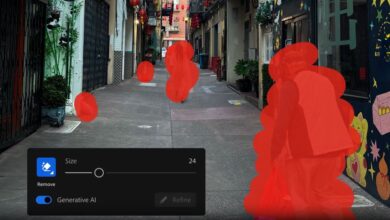Is Generative AI Part of Your Workers’ Comp Processes? NCCI Session Says it Soon will Be

Orlando, FL (WorkersCompensation.com) — It’s probably not much of an exaggeration to say that AI is everywhere, and the next phase that’s taking the world — and workers’ compensation — by storm is “generative AI.”
Generative AI is the brand of AI that fills in the gaps of creative work of some kind, and Microsoft’s Jeffery A. Williams told NCCI AIS attendees last week that it is fueling a democratization in workplaces in which employees are driving improvements.
According to Williams, the four main areas where generative AI is reshaping work are:
(1) Content generation. This includes things like drafting emails and preparing thoughts for speeches and presentations.
(2) Summarizing information. For example, generative AI can pull together the contents of a conference call or webinar to help participants “get caught up or cover missed points.”
(3) Semantic search. Williams explained that in a document or piece of information, “the robot can understand what you’re asking and find the information you’re looking for.”
(4) Ability to generate code. Thanks to generative AI, the power to code no longer resides strictly in the hands of the coders.
But why should workers’ compensation carriers get onboard with generative AI? Williams said there is a four-fold value proposition for carriers:
(1) It enriches the employee experience by giving employees tools to do their jobs better.
(2) It reinvents the customer experience. For example, chatbots are now better able to generate responses that will actually address the question a customer is asking.
(3) It is reshaping business process, leading to ways to accomplish tasks quicker.
(4) It is “bending the curve” on innovation in that it’s becoming embedded in products, processes, and workflows and has the potential to become the way claims are managed.
Looking at use cases, Williams said three areas stand out for workers’ compensation carriers:
(1) Customers. For example, agents can now provide a deeper level of service to customers that is now digital. “How can you apply generative AI to customer experiences,” Williams said. “You can find pointed responses” to get the customer what they need.
(2) Core functions. Williams said that generative AI has the ability to improve underwriting and claims effectiveness. “Ho do we get underwriters through faster? How can we help triage claims? What are the key points of insight? How can we leverage AI to accelerate claim resolution?” Williams said.
(3) Corporate functions. For example, AI can be a “copilot” for legal in writing contracts or in sales and marketing efforts. “The use case will be unique for every carrier,” Williams said.
Where are We?
Although there are plenty of reasons to adopt generative AI as part of their processes, Williams noted that it’ll still be a while before AI is commonplace in the industry. He explained that it comes in waves:
(1) Internal use cases. “Most insurers are here,” Williams said. “How do I make my employees better at their jobs?”
(2) External use cases. This involves using the technology to be customer-friendly, but many insurers haven’t gotten there yet due to concerns about security and customer privacy. However, those that are on this wave are there for business purposes. “How do we use the tech for new revenue?” Williams said.
(3) New products. “Few insurers are at this point,” Williams said, but the future holds the promise of AI that can create new products for customers, driving the business case for the technology.
According to Williams, embracing AI requires change management, which is the “biggest obstacle in implementation of AI.”
“How do I get my people to use this stuff?” Williams said.
Some best practices are to embrace AI as a community endeavor and to partner with people who know the technology well, Williams advised.
He also explained that it’s not a one-size-fits all approach, so each organization has to find their own AI way.
“You start where you’re comfortable,” Williams said.
Source



